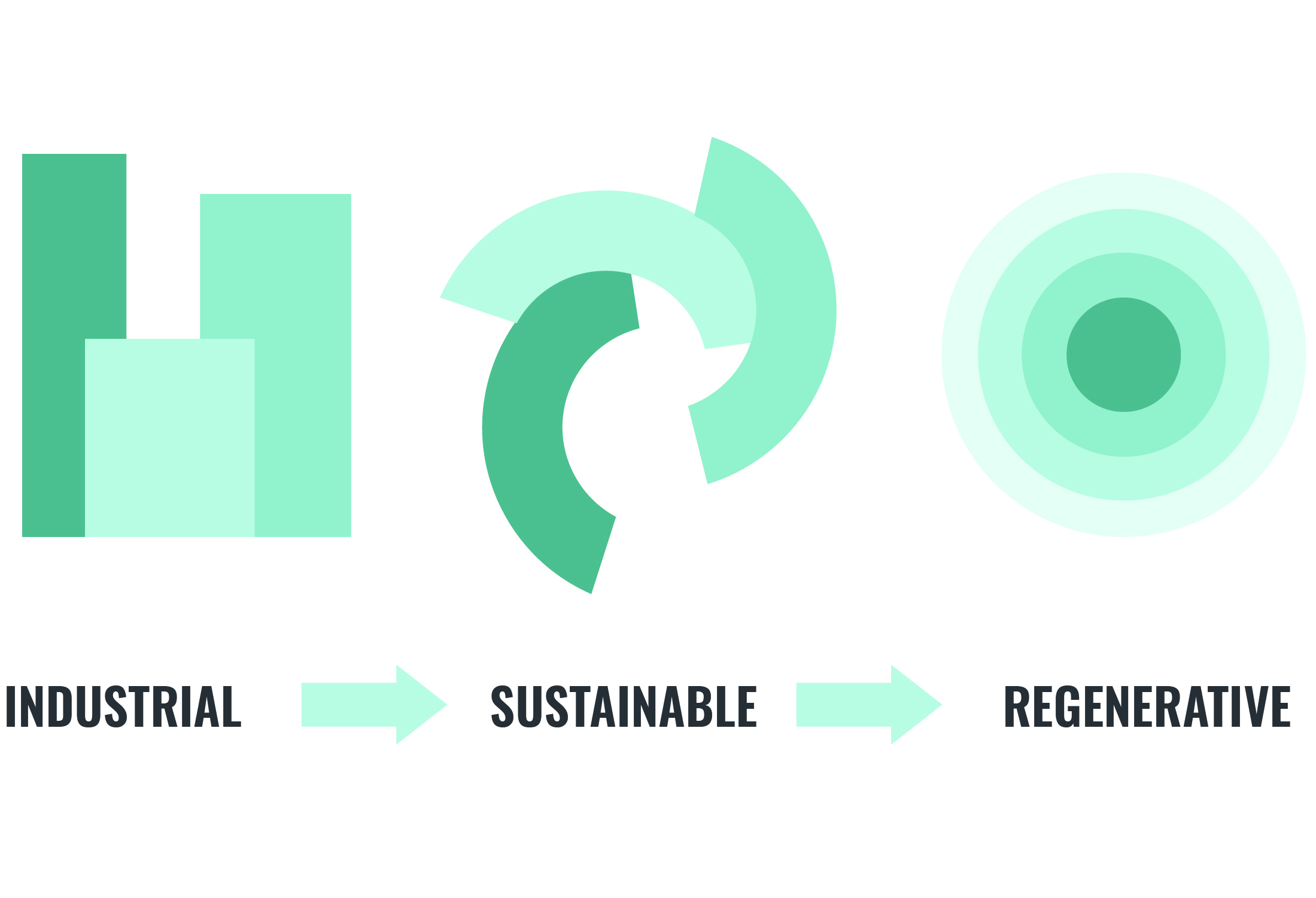As regenerative practitioners we guide project teams through a process that considers the true purpose of the project and its potential to bring positive social, cultural, and ecological impacts.
REGENERATIVE DESIGN IN PRACTICE
June 15, 2021
DRIVEN BY LIVING SYSTEMS
Although regenerative practice is not a new concept, it has recently been gaining traction in the architecture world. At its core, regenerative design is based upon the understanding that we humans are a part of natural ecosystems whose health and thriving are influenced by our actions. Specifically in the building industry, this means that we recognize our conventional practices of extraction, production, fabrication, construction, etc. inherently degrade natural systems, and we must shift to practices that have a regenerative effect.
Fundamental to this is the concept of whole systems, or the interconnectedness of all living things, and that one living system is nested within another, and that within another. A heart is a system of cells and tissues living within a circulatory system connected to a respiratory system within a living person who is part of a family living in a community surrounded by a forest, etc.
Regenerative design is rooted in the permaculture movement of the 1970s in which new ways of thinking about agriculture emerged in response to industrialized and monocrop-based methods that had become the norm. This movement was more like a reconnection with ancient ways of understanding natural systems from which post-industrial humans had strayed. It was, in fact, whole systems thinking, and it soon found a bridge from agriculture into the design of the built environment as frameworks were developed for a regenerative approach to landscape architecture, and eventually to architecture and buildings.

SEEKING POTENTIAL OVER SOLVING PROBLEMS
A regenerative approach to building design includes all the commonly understood principles of sustainability, or “green” buildings, but goes beyond technical solutions thinking to seeking higher potentials in planning a project. Regenerative design asks: how else is this project connected to people and place, and how can it bring something sustainingly positive to those relationships?
Sustainable and “green” design practices have evolved over many decades, focusing on reducing the impact of buildings on the natural environment. Solar panels, geothermal systems, and other methods of harvesting energy from renewable sources with no carbon emissions are very familiar strategies now. Using efficient heating, cooling, and lighting systems and designing high performance building envelops reduces a building’s demand for energy. These and many other strategies continue to improve buildings’ relationships to the natural environment, such that buildings are conceived as energy generators, water filterers, carbon sinks, and much more.
The most persistent challenge, however, has less to do with technology or know-how and much more to do with will. Too often possibilities for better buildings are limited by a project team’s – designers, builders, and owners alike – unwillingness to break with convention and pursue better outcomes through the many strategies already developed.
BUILDINGS THAT GIVE BACK
This is where regenerative practice leads to new capacities. While regenerative design calls on us to engrain a whole systems understanding into the way we make buildings, it also requires that we evolve new ways of thinking as individuals, project teams, and whole communities. Changing the way buildings are constructed, inhabited, and integrated into an ecosystem requires a fundamental shift in the design process, ensuring decision making is grounded in a pursuit of a regenerative state. In this way, building projects can go beyond the “do less harm” sustainability paradigm and strive for a “do more good” regenerative paradigm.
Through every new project, Placework is deepening our practice in this regard. In addition to designing buildings that are energy-conscious, minimizing consumption and sourcing renewable energy, and rigorously tracking total embodied carbon of our projects, we are continuously cultivating a broader design process. As regenerative practitioners we guide project teams through a process that considers the true purpose of the project and its potential to bring positive social, cultural, and ecological impacts. Placework actively seeks partners who want to take this approach to their work and the shaping of their places.